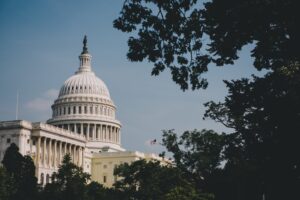Student loan debt continues to affect millions of Americans. With more than 45 million borrowers holding over $1.7 trillion in student loans, this growing financial burden has become one of the country’s most pressing economic challenges. For many, debt delays milestones like buying a home, starting a business, or saving for retirement.
While federal loan forgiveness programs such as Public Service Loan Forgiveness (PSLF) and Income-Driven Repayment (IDR) offer critical support, many borrowers don’t qualify or face long waiting periods. That’s where state-specific student loan forgiveness programs can make a major difference — offering tailored relief based on local workforce needs and economic priorities.
Understanding the Scope of Student Loan Debt
Student loan balances have now surpassed both credit card and auto loan debt, putting pressure on individuals and families across all income levels. This debt doesn’t just slow individual progress; it also affects community investment and long-term economic growth.
Recognizing this, states have developed targeted loan forgiveness initiatives to complement federal programs and provide debt relief where it’s needed most.
Federal Loan Forgiveness: A Foundation for Relief
Federal programs remain the cornerstone of loan forgiveness options. Key examples include:
- Public Service Loan Forgiveness (PSLF): Forgives remaining federal Direct Loan balances after 120 qualifying payments made under an income-driven repayment plan while working for a qualifying employer.
- Income-Driven Repayment (IDR): Adjusts monthly payments based on income and family size, with remaining debt forgiven after 20–25 years of qualifying payments.
- Teacher Loan Forgiveness: Offers up to $17,500 in forgiveness for teachers serving five years in low-income schools.
These programs provide nationwide access, but eligibility can be strict — which is why state-level programs have become so valuable.
Why State-Specific Student Loan Forgiveness Programs Matter
1. Broader Access to Relief
State programs often cover borrowers who don’t qualify for federal forgiveness. They may focus on residents working in specific professions or living in certain areas, expanding access to people overlooked by federal requirements.
2. Addressing Local Workforce Shortages
Many states face critical shortages in fields like healthcare, education, and public safety. By offering loan forgiveness to professionals in these areas, states attract skilled workers where they’re needed most — improving public services while easing financial strain.
3. Stimulating Economic Growth
When debt burdens decrease, borrowers can spend and invest more locally. This boosts homeownership rates, small business creation, and community development — helping state economies thrive over the long term.
Common Eligibility Requirements
Each state sets its own rules, but many programs share similar guidelines:
- Residency: Applicants must live or plan to work in the state offering forgiveness.
- Employment: Forgiveness may target specific occupations such as teachers, nurses, or public service workers.
- Service Commitment: Some programs require a set period of employment in an approved field or location.
- Income Limitations: A few states restrict eligibility to borrowers below certain income thresholds.
Understanding these criteria early can help borrowers plan their careers and loan repayment strategies around available benefits.
Examples of State Programs
New York – Get on Your Feet Loan Forgiveness
Provides up to 24 months of federal loan repayment assistance for recent graduates living in New York and earning below a certain income threshold.
Texas – Loan Repayment Assistance for Teachers
Offers up to $2,500 per year for teachers working in shortage areas or serving low-income communities.
California – State Loan Repayment Program
Supports healthcare professionals working in underserved regions with up to $50,000 in loan repayment assistance for a two-year service commitment.
Other states, including Florida, Minnesota, and Illinois, have similar programs tailored to local workforce and economic goals.
Challenges and Considerations
While beneficial, these programs also come with challenges:
- Complex applications that require careful documentation.
- Limited funding, meaning some programs operate on a first-come, first-served basis.
- Tax implications, since forgiven debt may be considered taxable income under certain state rules.
Borrowers should always verify program details through their state’s official education or financial aid websites before applying.
How Borrowers Can Take Advantage
- Research your state’s programs. Start with your state’s Department of Education or Student Aid Commission.
- Confirm eligibility. Review residency, employment, and service requirements.
- Coordinate with federal options. In some cases, you can qualify for both federal and state forgiveness.
- Stay organized. Keep service records, pay stubs, and communication logs to ensure smooth verification later.
Key Takeaway
State-specific student loan forgiveness programs fill crucial gaps in the national fight against student debt. By tailoring relief to local economies and workforce needs, they give borrowers new paths toward financial freedom while strengthening communities across the country.
If you’re managing student loans, exploring your state’s forgiveness options could be one of the most impactful steps you take toward long-term financial stability.







